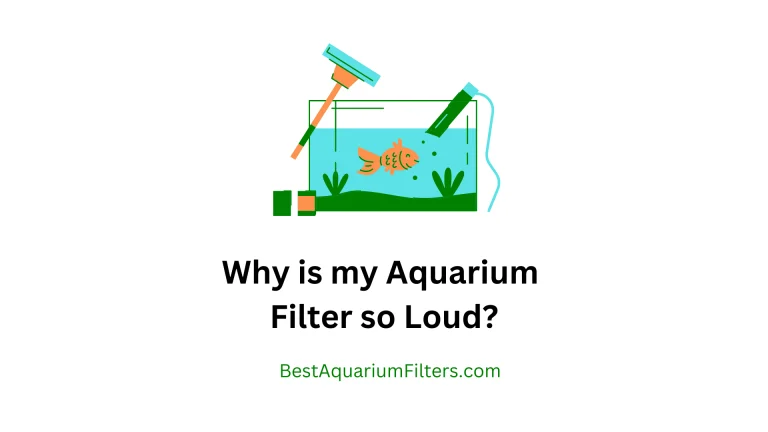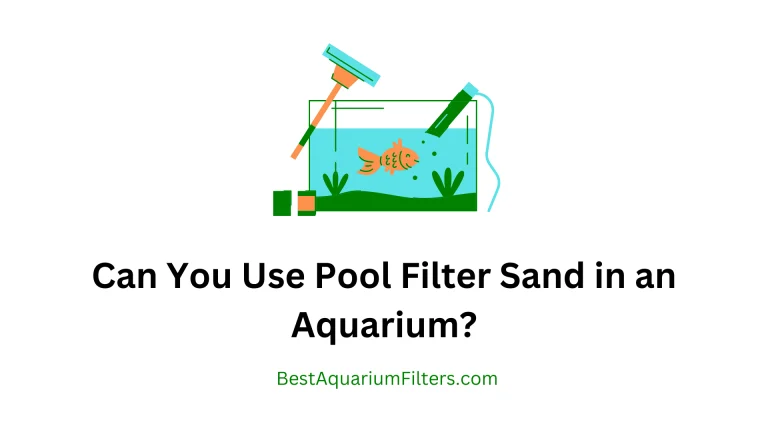How to Clean Aquarium Filters?
Everyone wants their fish or other aquatic pets to have a clean home. Keeping the water clean is super important, and one way to do that is by cleaning the filter in your aquarium. Filters help get rid of yucky stuff in the water, but they can get dirty, too. If you clean them properly, they will work well.
So, let’s learn why cleaning aquarium filters is essential and how to clean aquarium filters to keep your underwater friends happy and healthy!
How to Clean aquarium filters?
Step 1: Get Your Supplies Ready
Before cleaning your aquarium filter, ensure you have everything you need.
Bucket:
Grab a clean bucket to hold water and the dirty filter parts while you clean them. It’s best to use a bucket just for aquarium stuff to avoid chemicals or residues from regular cleaning.
Old Aquarium Water or Dechlorinated Water:
You’ll need some old aquarium water or water that doesn’t have chlorine in it. It is important for rinsing the filter parts because it keeps the good bacteria alive and helps keep your tank balanced.
If you don’t have old aquarium water, use water that’s been treated to remove chlorine.
Soft Brush or Sponge:
Find a soft brush or sponge to clean the filter parts gently. You don’t want anything abrasive that could damage the delicate filter materials. Make sure it’s for aquariums to avoid introducing any harmful chemicals.
Filter Media:
Filter media are the materials inside the filter that do the cleaning work—like sponge filters, ceramic rings, and activated carbon. Take them out of the filter and give them a rinse. Be careful not to damage them because they’re home to good bacteria that keep your tank healthy.
Step 2: Getting Ready
Getting ready for cleaning is essential for safety and making sure everything goes smoothly. Here’s what you need to do:
Turn off the Aquarium Equipment:
First, switch off everything connected to your aquarium, like lights and heaters. It keeps things safe and avoids any problems while you clean.
Unplug the Filter:
Next, unplug your filter from the power. It is really important to avoid any electrical accidents or harm to the filter while you’re cleaning it.
Take out the Filter Media:
Now, carefully remove the filter media from the filter. It might involve taking out cartridges, sponges, or baskets with different filter materials inside.
Be gentle so you don’t harm the good bacteria living there. Put the filter media in a clean bucket or container to keep it safe while you clean.
Check for Damage:
Before you start cleaning:
Step 3: Cleaning the Filter Media
Cleaning the filter media is really important to keep your aquarium filter working well. Here’s what to do:
Rinse with Old Aquarium Water or Dechlorinated Water:
Take out the filter media you removed from the filter and give it a good rinse with either old aquarium water or water that doesn’t have chlorine in it.
It helps keep the good bacteria alive, which are essential for keeping your tank healthy. If you don’t have old aquarium water, use water that’s been treated to remove chlorine.
Gently Scrub with a Soft Brush or Sponge:
After rinsing:
Don’t Use Tap Water:
It’s really important not to use tap water straight from the faucet to clean the filter media. Tap water often has chlorine or chloramine in it, which can kill the good bacteria in your filter.
It can mess up your tank’s balance and cause water quality problems. Always use old aquarium water or water that’s been treated to remove chlorine when you’re cleaning your filter media.
Step 4: Cleaning the Filter Components
Now, let’s clean the parts of the filter:
Rinse the Filter Housing with Aquarium Water:
Use aquarium water to rinse the filter housing well. It helps get rid of any dirt or algae that’s built up inside. Rinsing with aquarium water keeps the good bacteria alive, which is important for keeping your tank healthy.
Make sure to clean all the surfaces inside the housing, like the walls and compartments, to keep water flowing smoothly.
Clear Debris from the Filter Intake and Output:
Check the filter intake and output for any debris or buildup that could block water flow. Use a soft brush or sponge to gently clean these parts. Make sure the intake tube and strainer are free from any gunk.
It’s important to keep these areas clear so water can move through the filter properly.
Check the Impeller for Blockages:
Take out the impeller assembly and look for any blockages or dirt. Use a soft brush or sponge to clean the impeller blades and shaft. Make sure everything spins freely without any problems. If you see any damage, replace the parts if needed. Once everything is clean and checked, put the impeller assembly back together.
By cleaning all these parts well, your filter will keep your aquarium clean and healthy for your fish.
Step 5: Putting Everything Back Together
Now that we’ve cleaned everything let’s put it all back together:
Put the Clean Filter Media Back:
Carefully place the clean filter media back into the filter housing. Make sure to arrange it correctly according to the manufacturer’s instructions.
It means putting things in the right order and orientation for the best filtration. Make sure everything fits snugly with no gaps or loose parts.
Reattach Any Removed Components:
Next, put back any parts you took off during cleaning, like the impeller assembly, intake and output tubes, and filter cover.
Follow the manufacturer’s instructions or guidelines to ensure everything is in the right place and securely fastened. Check all the connections to make sure they’re tight and won’t leak any water.
Make Sure Everything’s Secure:
Before you turn the filter back on:
Step 6: Turning the Filter Back On
Now that everything’s back together let’s get the filter running again:
Plug in the Filter:
Make sure all the filter parts are securely back in place. Then, plug the filter back into the power source. Check that the power cord is connected properly and that there’s no damage to it.
Also, make sure the power outlet is working and not overloaded with other devices.
Turn on the Aquarium Equipment:
Now, turn on all the things connected to your aquarium, like lights and heaters, that you turned off earlier. It gets everything in your aquarium system back up and running. Give it a few moments to start up properly before moving on to the next step.
Check for Leaks or Strange Noises:
Once everything is running, look closely at the filter and its connections for any leaks or drips. Check that all seals, gaskets, and connections are tight and in the right place.
Listen for any weird sounds or vibrations coming from the filter. If you notice any leaks or strange noises, turn off the filter and fix the problem before you start it up again.
Last Step – Disposing of Waste
After cleaning your aquarium filter, it’s important to get rid of the waste properly. Here’s what to do:
Get Rid of Dirty Water Safely:
Be careful when disposing of the dirty water used for rinsing the filter media and cleaning the filter parts. Don’t pour it down household drains or into natural water bodies because it might contain harmful stuff like chemicals or excess nutrients that can harm the environment.
Instead, pour it into a sink or toilet connected to a wastewater treatment system. Or, you can use it to water plants or flush toilets, as long as it won’t harm the plants or soil.
Clean Up the Area:
After you’re done cleaning the filter and getting rid of the wastewater, clean up any spills or messes that happen during the process. Use a clean cloth or paper towel to wipe down surfaces and get rid of any water, dirt, or residues.
Make sure to clean around the aquarium, filter, and any cleaning supplies you have used. According to your local waste disposal rules, dispose of any used cleaning materials, like brushes or sponges.
How often do you clean aquarium filters?
How often you clean your aquarium filter depends on a few things, like how big your tank is, what kind of filter you have, and how many fish you have.
It’s a good idea to clean your filter about once a month to stop dirt from building up and to keep it working well. But if you have a lot of fish or messy ones, you might need to clean it more often, every two weeks or even every week.
Checking the water regularly for things like ammonia, nitrites, and nitrates can help you figure out when it’s time to clean the filter.
If you stick to a regular cleaning routine and keep an eye on the water quality, your fish will stay happy and healthy in their tank.
Importance of cleaning aquarium filters
Keeping the filter in your aquarium clean is super important to keep your fish healthy. The filter helps get rid of all the junk in the water, like leftover food and waste from the fish.
If you don’t clean it regularly, bad stuff can build up in the water, making your fish sick or even killing them. Plus, a clean filter ensures enough oxygen in the water, which is also really important for your fish to stay happy and healthy.
So, clean your filter regularly to keep your fish and other aquatic buddies safe and sound.
Conclusion
This article showed you how to clean aquarium filter properly, keeping your fish happy and healthy. Following the steps explained here, you can ensure your fish tank stays clean and safe for your underwater buddies.






